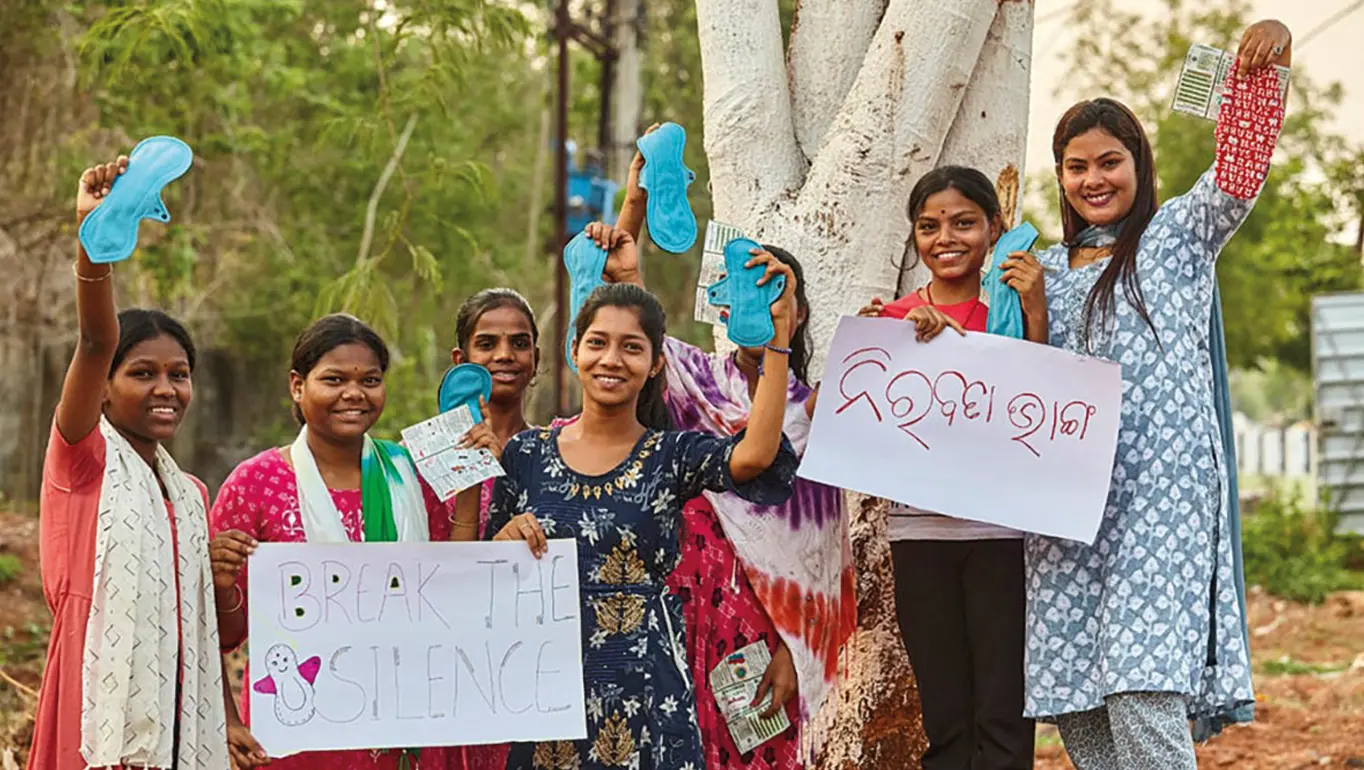Beyond health concerns, period poverty disrupts education, impacts emotional well-being, and reduces opportunities for a better life. Despite global progress, many still face challenges in managing their periods with dignity.
The World Bank estimates that at least 500 million women and girls lack safe menstrual management facilities. More than 1.25 billion lack private toilets, while 526 million have no toilet access at all. The COVID-19 pandemic worsened this crisis, restricting access to menstrual hygiene support and increasing product prices. These barriers force individuals to use unsafe alternatives, jeopardizing health and education.
In developing countries, menstrual products are scarce, leading many to use rags, grass, or paper. Such alternatives pose serious health risks. In some regions, up to half of all women and girls rely on unsafe materials. Those who have undergone female genital mutilation (FGM) face even greater risks due to poor menstrual care.
Education is heavily impacted by period poverty, particularly in regions where access to menstrual products and private facilities is limited. In Kenya and Uganda, many girls miss school during their periods due to the lack of necessary menstrual supplies and proper sanitation. This absence from school is not a minor disruption—it significantly impacts their education and future opportunities. UNESCO reports that in Sub-Saharan Africa, one in ten girls miss school during their period, which amounts to 20% of the school year and therefore a substantial loss in learning.
In Kenya alone, 65% of women and girls cannot afford basic menstrual products, forcing them to find unsafe or unhygienic alternatives. Additionally, only 32% of rural schools provide private toilets, leaving many girls with no choice but to stay home during their menstruation due to the lack of privacy and facilities to manage their menstrual health. The result is not only interrupted education, but also a long-term impact on academic performance and future prospects. This lack of access to proper menstrual care perpetuates gender inequality, as girls in these regions are often forced to choose between their education and managing their periods.
Cultural stigma and health consequences
Menstrual taboos play a significant role in exacerbating period poverty, especially in regions where cultural practices enforce harmful restrictions. In Nepal, the chhaupadi practice, which forces women and girls into isolation during menstruation, is a stark example of how these taboos create dangerous living conditions. Women and girls are often forced to stay in makeshift shelters or animal sheds, sometimes without proper sanitation or access to medical care. This isolation exposes them to a range of severe health risks, including infections, respiratory problems, and even the spread of diseases due to unsanitary living conditions.
Sexual exploitation is a heartbreaking consequence of period poverty, where extreme financial hardship forces some young girls to make impossible choices. In rural Kenya, the lack of access to menstrual products leads some girls to resort to transactional sex as a means to obtain the essentials they need for menstruation. This grim reality exposes them to significant risks, including early pregnancies, sexually transmitted infections, and long-term physical and psychological trauma. Studies have shown that 1.3% of young girls reported engaging in this form of survival sex, with those under 15 years old being at an even higher risk.
The vulnerability of these girls is compounded by their limited options for education, healthcare, and social support, leaving them trapped in cycles of exploitation and poverty. This devastating situation underscores the urgent need for comprehensive solutions to both menstrual product access and the broader social and economic conditions that push vulnerable girls into dangerous situations.
Period poverty in wealthier nations
Period poverty is not limited to developing countries. In the UK, more than 137,700 girls missed school last year due to a lack of menstrual products. Parents often struggle to provide these essentials, with 6% admitting to theft and over 20% sacrificing necessities to afford them.
The COVID-19 pandemic exacerbated the crisis. A survey by Plan International UK found that over a third of girls aged 14 to 21 struggled to afford menstrual products—an increase from previous years. Over a million girls had to rely on alternatives like toilet paper, highlighting the pervasiveness of period poverty.
The crisis in the US and New Zealand
Despite being one of the wealthiest nations in the world, the United States is not immune to the widespread issue of period poverty, which affects millions of individuals across the country. A 2019 study conducted in Missouri revealed that 64% of women had experienced an inability to afford menstrual products at some point during the previous year. Faced with this financial burden, many women resorted to using alternative materials such as cloth, rags, tissues, or even diapers, which pose serious health risks. In New Zealand, a 2020 survey revealed that over 90,000 school-age girls—about one in twelve students—missed school due to a lack of menstrual products. Among students in years 9 to 13, 12% struggled to access necessary supplies.
Period poverty is a widespread issue, affecting people from impoverished regions of Sub-Saharan Africa to wealthier nations like the UK and the US. Its consequences extend beyond health, limiting education and future opportunities. Addressing period poverty requires raising awareness, improving product accessibility, and implementing policies that uphold dignity and equity. By supporting initiatives aimed at eradicating period poverty, we can ensure that menstruation is never a barrier to education, health, or opportunities.



